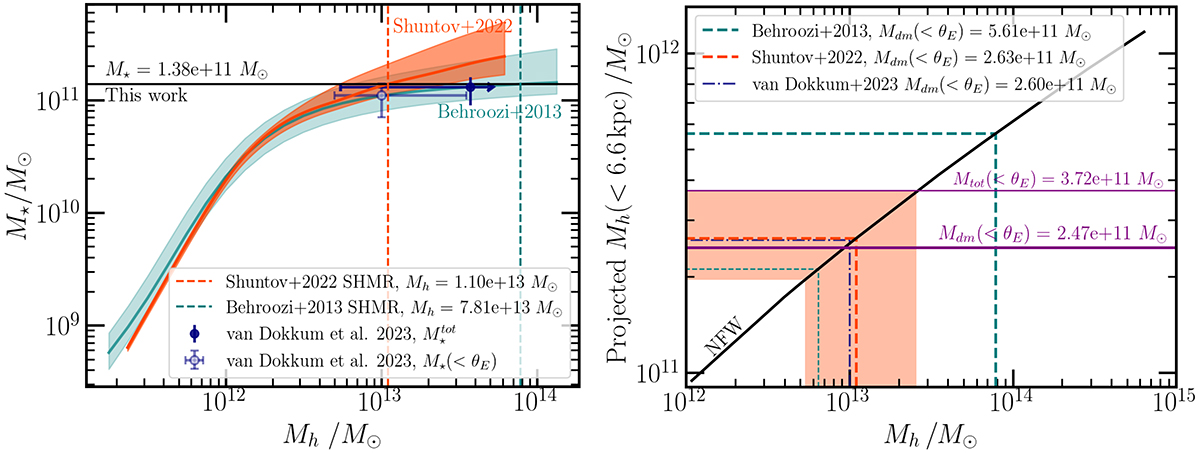Fig. 6.

Download original image
Comparison between the DM halo mass deduced from lensing and the theoretical value obtained from stellar-to-halo mass relations (SHMRs). Left: SHMR from Shuntov et al. (2022) (in orange) and Behroozi et al. (2013) (in teal) at z ∼ 2 that we use to estimate the dark matter halo mass in which the lens resides. The solid black horizontal line marks the total stellar mass that we estimate for the lens, while the dashed vertical orange and teal lines mark the halo mass obtained from Shuntov et al. (2022) and Behroozi et al. (2013) SHMR respectively. For comparison, we also show the SHMR points from van Dokkum et al. (2024) that we derive using their total stellar mass and the Behroozi et al. (2013) SHMR as shown in the solid blue marker. The transparent blue marker shows the stellar and halo masses quoted in van Dokkum et al. (2024). Right: relation between projected mass within the Einstein radius and total halo mass. The orange dashed line and shaded regions show the results from Shuntov et al. (2022) SHMR, while the teal thick and thin dashed lines show results and the lower limit on the uncertainty from Behroozi et al. (2013) SHMR. The purple thick line shows the dark matter mass derived as Mtot(< θEin)−M⋆(< θEin), while the thin one shows the total mass derived from the SL_FIT modeling. For comparison, we also show the results quoted in van Dokkum et al. (2024) in a dashed-dotted blue line.
Current usage metrics show cumulative count of Article Views (full-text article views including HTML views, PDF and ePub downloads, according to the available data) and Abstracts Views on Vision4Press platform.
Data correspond to usage on the plateform after 2015. The current usage metrics is available 48-96 hours after online publication and is updated daily on week days.
Initial download of the metrics may take a while.


